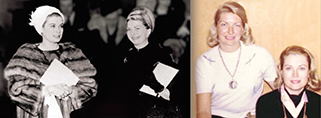World renowned Paris-based jeweler Cartier has a long relationship with royalty and celebrities. A new exhibition in Denver, USA (until March 15th 2015) will feature some extraordinary jewels that belonged to Princess Grace, Elizabeth Taylor, Jennifer Lawrence, and more. Standouts include a platinum, diamond, and emerald necklace from 1932 and a necklace custom ordered by Sir Bhupinder Singh, Maharaja of Patiala, but it’s the stunners worn by the likes of Princess Grace of Monaco and Wallis Simpson that will draw viewers into the history and drama of Cartier,
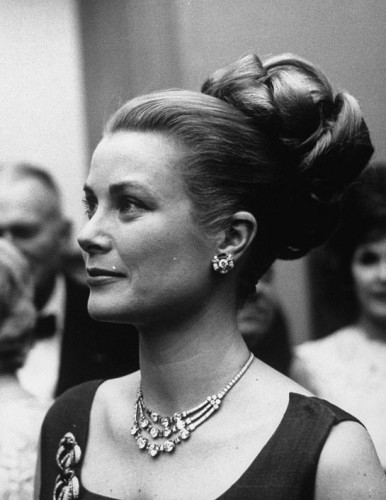
Grace’s nearly ten-and-a-half carat emerald-cut engagement ring from Prince Rainier is on view, as is the whimsical 1940 flamingo brooch designed by Jeanne Toussaint and worn by Simpson. And as far as Hollywood royalty goes, both Elizabeth Taylor and María Félix have pieces featured in the collection, too, including the Burmese ruby and diamond necklace that was gifted to Taylor by her second husband Mike Todd and Félix’s glittering crocodile necklaces (the Mexican-born actress famously brought a baby crocodile into the jeweler’s studio so it could be replicated right down to the very last scale).
But it’s not only actresses of a bygone, glamorous era who have fallen under the spell of Cartier. Charlize Theron, Jennifer Lawrence, and Lupita Nyong’o —all Academy Award–winners—have also sported pieces by ‘Maison’ Cartier.
Pierre Rainero, Cartier’s image, style and heritage director, says it is important for Cartier to show its collection in museums as a unique expression of art. He adds “Jewelry is an item that lives with the people, unlike a painting hanging on a wall. It is linked to the way of life of people, representing very strong evolutions of a society and, in this case, the role of women within society, especially in the 20th century.”
The Denver Art Museum is the sole worldwide venue for this exhibition, featuring a stunning assortment of jewelry, timepieces and precious objects created between 1900 and 1975. The exhibition highlights Cartier’s rise to preeminence in the midst of historical events as it transformed itself into one of the world’s most prestigious names in jewelry. In addition to items loaned by the Cartier Collection, the exhibition will include loans from museums and private collections from around the world. A focus on Elizabeth Taylor with a concentration of her jewelry is very special. Organized in seven thematic sections, the exhibition will feature a special section dedicated to providing a rare look at Cartier-crafted men’s items.
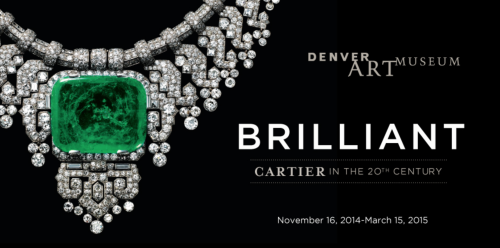
“One of the fascinating things about Cartier is that you can tell the story of the 20th century through its jewelry,” said Margaret Young-Sanchez, the curator of the exhibition. “Among other things, it decided to transform itself around 1900 from one of many Parisian jewelry houses into a pre-eminent global one, creating branches in first London and then New York, which helped give them access to a global clientele including many financiers and industrialists, especially in America.”
Roughly 350 pieces included in the exhibition are showcased across seven sections. In addition to the magnificent and glittering jewelry that will be featured in Brilliant: Cartier in the 20th Century, the exhibition will also feature a selection of original preparatory drawings, historic photographs, advertising materials, film clips and movie stills to provide insight into the evolving cultural setting of the time period to tell the story of Cartier. Paris-based exhibition designer Nathalie Crinière will transform multiple galleries at the Denver Art Museum, showcasing a dramatic installation that will highlight the objects’ glittering diamonds, deeply hued gems, and brightly colored materials such as gold, lapis, coral, jade.
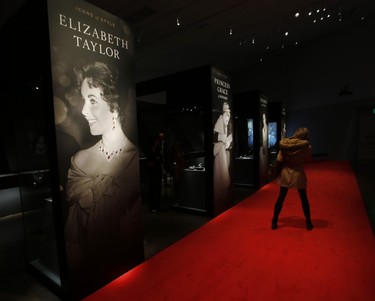
Exhibition themes include:
- Aristocracy and Aspiration: Focusing on objects from 1900–1918, this section features diamond, sapphire, rock crystal and pearl jewelry and enameled decorative items that showcase a refined and elegant aesthetic embraced by European royalty and aristocrats—and the wealthy Americans who aspired to join their social class. Cartier was a pioneer in the use of platinum, which complements the whiteness of diamonds, and permits the creation of light, delicate settings.
- Art Deco: New Outlook: Cartier was a leader in the innovative Art Deco movement of the 1910s to 1920s that highlighted a bold look with a new emphasis on color and geometry. The Maison utilized new materials in this era including jade, coral and black onyx.
- Art Deco: Foreign Fascination: Cartier capitalized on the excitement generated by international events after World War I, such as the discovery of Tutankhamen’s tomb, to create original designs that incorporated exotic styles and materials including imported carved jade, lacquer and faience. Cartier’s exotic flair culminated in the colorful tutti-frutti style jewelry and sculptural mystery clocks.
- Masculine View: While Cartier is most famous for women’s jewelry, they have always produced sleek, handsome items that appeal to men. Louis Cartier is credited with inventing the modern men’s wristwatch. The exhibition will include numerous models and styles, in addition to elegant and complex pocket watches. Cartier also designed beautiful cuff links, pocket items, cocktail and desk accessories, and inscribed cigarette cases, to name a few. Historic events such as Charles Lindbergh’s flight across the Atlantic, Franklin Roosevelt’s role in the Allies’ World War II victory and the American lunar landing were commemorated by inscribed gift items made by Cartier and featured in the exhibition.
- Art of Smoking: At the turn of the century, smoking in polite society was largely limited to men and Russian women. As social norms loosened, cigarette smoking was adopted by all classes, and elegant smoking accessories became a necessity for fashionable women. This section features textured, enameled and jeweled cigar cutters, cigarette cases and lighters from 1907 through the 1940s.
- Age of Glamour: The global depression affected Cartier’s business, but a wealthy, cosmopolitan clientele continued to purchase showy jewelry, clocks and accessories in platinum and massive yellow gold settings. This section highlights designs from the 1930s to 1960s preferred by celebrities and Café Society (as international jet-setters were sometimes known).
- Icons of Style: The exhibition’s concluding section is devoted to Cartier’s most famous clients, including style icons Daisy Fellowes, the Duchess of Windsor, Princess Grace of Monaco, Dame Elizabeth Taylor and Mexican film star María Félix. Cartier’s original designs were essential to the self-expression of the individuals who shaped 20th century culture and fashion.
Objects made for men aren’t overlooked but there’s much less bling. They include Cartier’s famous and much copied wristwatches, favored by Juan Peron, Cary Grant and Andy Warhol. Louis Cartier began working on streamlined watches for men to wear around their wrists instead of in their pockets in 1904, about 25 years before they became popular. There are also the cigarette cases, cuff links and even a pocket knife.
Exclusive downtown Denver hotel packages are available through March 15, 2015 via BrilliantinDenver.com. Choose from 11 featured downtown hotel packages include two VIP, skip-the-line tickets (unless otherwise noted) and additional special offerings through the run of the exhibition.
To purchase Tickets visit http://www.brilliantindenver.com
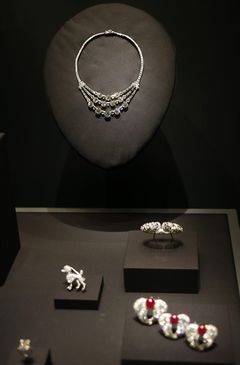
Cartier items from Princess Grace
Read more about Cartier and Princess Grace …. and see what the Paris exhibition was like
